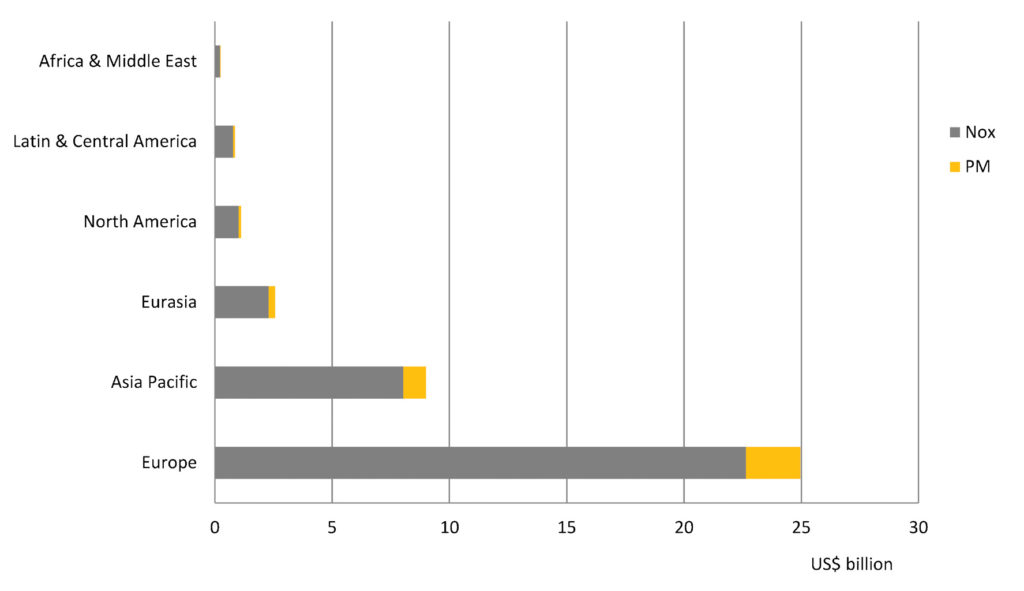A Global Roadmap for Autogas
Estimating the social welfare benefits
Reduced emissions of NOx alone contribute around US$35 billion and PM2.5 another US$4 billion. More than half of these savings come from Europe, with around one-quarter coming from the Asia-Pacific region (Figure 15). The increase in emissions of CO and VOC would have a negligible impact on overall societal cost, as the health effects of those increases, which are modest, are far smaller than for NOx and PM2.5.
Table 5: Global emission savings and cumulative associated social welfare benefits in 2018-2040 in the Alternative Scenario
| wdt_ID | Type of emission | Emission savings (Mt) | Social welfare benefits (US$ billion) |
|---|---|---|---|
| 3 | NOx | 2.788 | 34.97 |
| 4 | PM | 0.049 | 3.80 |
| 5 | CO2 (well-to-wheels) | 130.280 | 15.24 |
| 6 | Total | n.a. | 54.01 |
Sources: Menecon Consulting analysis based on TML data and Clean Air for Europe data From DG Environment of the European Commission.
“The societal benefits of achieving the Autogas vision in the form of cleaner air, better health and reduced climate change would be substantial, totalling at least US$54 billion over the period to 2040.”
Figure 15: Cumulative social welfare benefit of reduced emissions of NOx and PM2.5 in 2018-2040 in the Alternative Scenario by region

Sources: Menecon Consulting analysis based on TML data and Clean Air for Europe (DG Environment of the European Commission) data.
The value of the socioeconomic benefits of lower CO2 emissions over the period to 2040 is estimated at around US$15 billion worldwide. This is an indicative estimate based on an assumed social cost of carbon of around US$115 per tonne for all regions.<sup>1</sup> Asia-Pacific accounts for over 40% of the global societal benefits and Europe and Eurasia for most of the rest.
The societal benefits from improved air quality and reduced climate change advantages would be complemented by the economic benefits enjoyed by end-users making the switch to Autogas. Motorists would enjoy lower fuel costs that quickly payback the upfront cost of converting their vehicle or buying a slightly more expensive OEM model. Switching to Autogas would entail a modest loss of government revenue as a result of lower excise taxes on Autogas, but this would be far outweighed by the societal benefits of reduced environmental damage. Additional economic benefits would also come from the additional jobs created in the Autogas sector.
